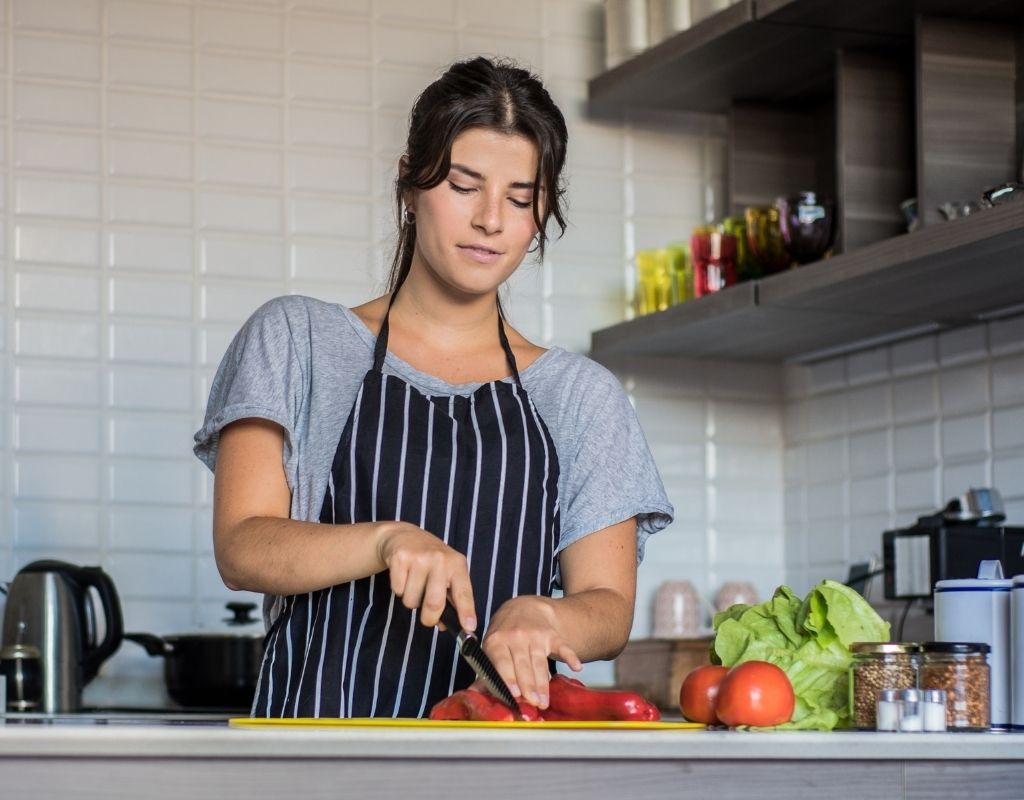We know we need to make more environmentally conscious decisions, but our busy lifestyles combined with the sometimes overwhelming number of rules and advice can make it hard to know how to get started.
Because so much of our time is spent in the kitchen, we thought we would take a look at some simple ways to make our kitchen habits more sustainable.
There are lots of ways you can make a difference, so whether you want to draw a line in the sand and make wholesale changes or feel that making small changes over time is more manageable and realistic for you, the good news is that they all add up to make an overall positive change.
Buy wisely
The easiest way to start sustainable practices in your kitchen is at the purchasing phase.
- Factor the amount of packaging used into your purchasing decisions – this will send a signal to producers that we want less packaging.
- Look for items that have been made using recycled material.
- Buy seasonal fruit and vegetables as it will likely have been produced locally, be fresher, last longer, and not have been transported long distances using non-renewable energy.
- Where you can, choose organic. Look at the ingredients and choose those that are the most environmentally friendly.
- If you only need a small quantity of an ingredient, instead of buying a whole packet check with your friends if they have some you can use.
- When replacing appliances check out the energy efficiency ratings and factor that into your decision making.
Use the food
Leftover and unused food accounts for a huge amount of waste but there are some ways you go can easily reduce waste.
- Donate non-perishable items to your local community food pantry or through your local Facebook community
- Meal planning is a great way to ensure you have just the right amount of fresh food available and therefore reduce waste.
- Try and use as much of your food as possible – the broccoli stalks are fine to eat, as are the mushroom stalks. Give potatoes a scrub and cook with their skins on, and if you are roasting pumpkin, the skin, as well as the flesh, is edible plus it’s super tasty. Some recipes call for lemon zest, so if you are using just the juice consider zesting it first then freezing that for use next time. Leftover pepper (capsicum), corn, celery, and much more can be frozen to be used another time as can anything that came in a tin. Chicken bones can be used to make stock.
- Store leftover food in the fridge and reinvent it for another meal. Leftover food can be used as fillings for individual pies, a pasta bake or a frittata.
Kitchen practices
- Recycle as much as you can. Take some time to understand what can and can’t be recycled so that you don’t inadvertently contaminate the recycling truck and cause the whole load to be dumped instead of taken to the recycling centre.
- Find out if your local area has collection points for soft plastics recycling.
- If you don’t have a compost bin, consider starting one or add to your neighbours.
- Freeze food items that you don’t think you will eat before they spoil.
- Turn eggs regularly to extend their shelf life.
- Make your own cleaning products – equal parts of white vinegar and water plus the addition of some lemon rind make a great all purpose cleaner. Baking soda and water in a spray bottle is a deodorizer while a paste of these is an effective stain and spot remover.
What do you do to make your kitchen practices more sustainable?
See more:
 Written by Robyn Cody
Written by Robyn Cody
Robyn creates content on Kidspot NZ. Her hobbies include buying cleaning products and wondering why things don’t then clean themselves, eating cheese scones with her friends, and taking her kids to appointments.
Favourite motto to live by: “This too will pass”







Leave A Comment
You must be logged in to post a comment.